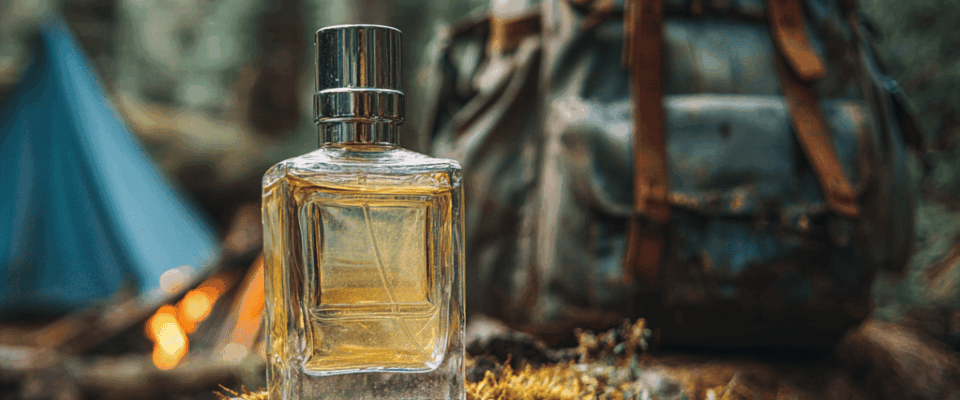Carrying a favorite scent into the wilderness may seem like an indulgence, but for many hikers, it’s a subtle ritual that ties home comfort with outdoor freedom. A small vial of perfume can become a personal reminder that even in the middle of nowhere, you’re still you. But there’s a right way and a wrong way to bring fragrance into camp life. Done well, you protect the scent and avoid annoying your fellow campers — and keep your gear safe from spills.
When you plan for a multi-day hike, every gram counts. That’s why you need to be practical about how you choose, pack, and store your perfume. A good scent should work in harmony with nature — not overpower it. With a few smart tricks, you can keep your trail scent as fresh as the forest air.
Choosing the best bottle for your backpack
Start with the bottle itself. Large glass bottles look beautiful on a dresser but are a terrible idea for the backcountry. They’re heavy, fragile, and take up precious space.
A compact travel-size bottle, ideally under 30 ml, is a smart pick. If you have an aluminum option like Montale’s signature bottles, you win twice: they’re lightweight and block sunlight that can break down fragrance oils. Plastic travel atomizers can work too, but check the quality — cheap plastic often leaks at altitude or temperature swings.
Before you pack, make sure the sprayer is tight. Some hikers even secure the nozzle with tape for extra protection. And if you decant from a big bottle into a mini sprayer, test it before you leave home to avoid surprise leaks.
Where to pack your scent in your gear
Placement matters. Many beginners toss a bottle into the main compartment and find it cracked after hours of bumpy trails. Instead, wrap your perfume in soft material — a small cloth bag or even a thick sock works. This absorbs shocks and insulates from heat.
Then place the wrapped bottle in the middle of your pack, cushioned by clothes. Keep it away from the outer edges where it could get smashed if you drop your bag. If you use a dry bag for electronics or food, you can add your scent there too — it keeps moisture out if you cross streams or hike in the rain.
Two extra packing tricks:
- Always carry a tiny ziplock bag in case the atomizer leaks.
- Bring a second tiny cloth to wipe off any spills before they ruin other gear.
Protecting fragrance from temperature swings
Nature isn’t a climate-controlled closet. Fragrances dislike extreme heat or freezing cold. Direct sun can ‘cook’ a perfume, changing the notes and making them smell flat or sour. On the other hand, cold temperatures can make oils separate and weaken the scent.
Keep your scent near the middle of your pack — that area stays the most stable in temperature. In winter, some hikers keep their bottle in an inner jacket pocket while walking to prevent freezing. At camp, store your perfume inside your tent, but not too close to a heater or campfire.
Using perfume without disturbing the trail
Spraying perfume in an open forest seems harmless, but strong scents can disturb wildlife and other hikers. Less is more. One or two light spritzes on your scarf or hat is enough to keep the aroma close.
Always apply your scent away from food areas. Animals have an incredible sense of smell, and a sweet perfume mixed with the scent of dinner can attract curious visitors you don’t want.
Respect your group too. Not everyone wants to smell your favorite woody musk all night in the shared tent. Subtlety is part of good camping etiquette.
Picking a scent that blends with nature
Not every scent belongs on the trail. Heavy, sugary perfumes clash with the crisp forest air. Woody, green, or herbal notes feel more at home. They echo the environment and keep you grounded in the landscape around you.
If you love layering scents, go for something light and fresh in the morning — maybe citrus or green tea notes. For evenings by the fire, a warm woody or mossy note feels cozy without being overwhelming.
Nature-inspired perfumes not only blend well but feel more authentic when paired with earthy gear and the smell of pine needles.
Small rituals that make scent part of your camping experience
Packing perfume isn’t about luxury for show. It’s about creating tiny rituals that feel grounding. Some hikers apply scent right before zipping up a sleeping bag, others dab it on a bandana that doubles as a sleep mask.
One nice touch: match your trail scent with other natural aromas — cedar soap, mint toothpaste, or herbal balms. Your camping hygiene kit can become its own forest-scented sanctuary.
Before you close your backpack for the next trip, you might also enjoy our guide on how to pick the right natural notes: check out Cedar, moss, and pine: iconic woody notes every hiker should know.
Keeping perfume fresh on the trail is about smart packing, sensible application, and choosing a scent that belongs outdoors. A well-packed scent stays safe from bumps, heat, and spills — and becomes part of your wilderness memories.
In the end, it’s about balance: a tiny bottle, carefully packed, reminds you that even the wildest trail can feel like home.
Questions and answers
It’s better to avoid them. They’re heavy and fragile — choose lightweight travel bottles instead.
Wrap it in soft fabric, place it in the center of your pack, and protect it from extreme temperatures.
Woody, green, and herbal notes blend naturally with forest air and don’t overpower the outdoors.

